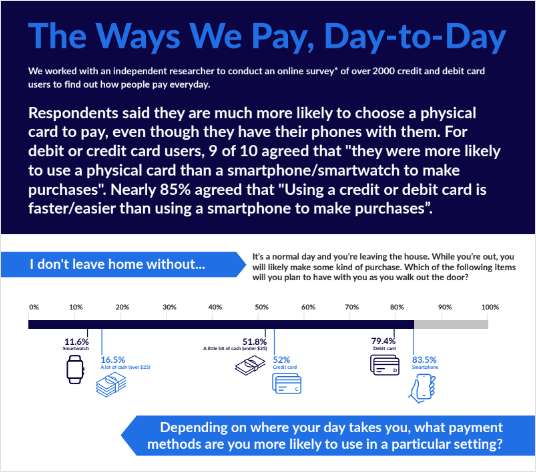MADISON, Wis. – May 2004 might go down in history as the most active month ever for credit union consolidation. According to CUNA's Monthly Credit Union Estimates, May saw the loss of 135 credit unions – the highest month-only decline ever. This decrease brought the total credit union count down to 9,349. In CUNA Mutual's May Credit Union Trends Report, another month of “extremely rapid consolidation” contributed to the loss of 557 credit unions over the past 12 months. As it stands, the industry has lost 230 more credit unions today than over the annual average for the past four calendar years. Annual membership growth estimates have slowed to just 0.4%, down from 1.8% for all of 2003, according to the report. At 85.6 million, the nation's CUs have added 771,000 members year-to-date. CUNA Mutual is forecasting a net increase of 2.1% for all of 2004, or 1.1 million members above today's level. Total membership should reach 86.7 million by year-end. CUNA Mutual says the credit union and membership counts will likely be revised up when the final NCUA Mid-Year Call Report data is released. Meanwhile, hard explanations on why membership has remained relatively down for the past year vary depending on the source but most would agree that tapping previously-looked over markets may be the key to reversing the downward trend. NCUA Board Member Debbie Matz is among those encouraging credit unions to venture off the beaten path. She says she launched the Partners and Leadership Successes (PALS) forum in March to stimulate discussions and offer real-life examples from credit unions on what's really happening in the trenches to increase membership. Credit unions from around the nation have submitted practices they currently use including those involving multicultural approaches and non-traditional branches. “Slowed growth is a sign of stagnation,” Matz said. “For some credit unions, maybe it's a fear of the unknown. Penetrating new markets can be costly and very labor intensive, but when you look at the penetration rate, which is about 30%, there is room for growth.” At NAFCU's recent annual meeting in Canada and on numerous occasions, Matz has touted the advantages of reaching out to Hispanics, Asian-Americans and African-Americans, tailoring services and products for each group. The underserved – those who rely on pawn shops, “predatory” lenders and check-cashing stores – are also a group ripe for inclusion. “Financial literacy is another way to expand membership, so is providing free income tax preparation assistance, making small loans available to people who need them in emergencies or having a means for immigrant members to send money back to their home lands,” Matz said. “There are so many ways to do it.” Even as credit unions continue to be consolidated at a record pace, community charters are proving to be a catalyst for long-term growth. According to a study released last fall by NCUA's Office of Examination & Insurance, the number of federal community charters has more than doubled-from just over 400 to well over 900. Community-chartered credit unions have a higher percentage of CAMEL 1 and 2 ratings and the vast majority of community charters maintain their high CAMEL ratings in the years after converting, the study revealed. Loan growth at community charters also exceeds most of their peers in each of the first five years after converting. Matz, who commissioned the study, said she wanted to see how safety and soundness fared after credit unions made the conversions. Credit unions looking to change to community charters can expect slightly lower earnings in the short term due to share growth being highest that first year and the catch-up period for loan growth, according to the study. During most of the 1990s, the average membership growth was around 3%, said Mike Schenk, CUNA vice president of economics and statistics. Most of that growth was fueled by the events leading up to the passage of H.R. 1151. “Then we started to see a dramatic slowdown,” Schenk said. Growth dropped to 2.3% in 2001, 2.1% in 2002 and 1.9% in 2003. Schenk compared credit union growth to statistics from the U.S. Census Bureau that tracked population growth in cities with more than 100,000 residents. The numbers almost mirror the industry's decline, he said – .8% in 2001, .62% in 2002 and .57% in 2003. “While there is a slowdown in membership, credit unions are still outpacing the overall population,” Schenk said, adding “credit unions should be vigilant” about expanding their membership to underserved groups. Jeff Taylor, NAFCU senior economist, is curious to see what the rest of the year's numbers will look like but for now, there is no real cause for concern. “It might be more of a seasonal thing but I would say 85 million members show that credit unions are doing a good job,” Taylor said. “As for consolidation, that's where the industry is going and 99% of merged credit unions are strong and healthy.” Still, it takes a few years to get to know the new groups and SEGs, when community charter conversions occur and that might have something to do with the lowered membership numbers, Taylor said. Bob Hoel, director of the Filene Research Institute, said there's also data out there that has redefined who is actually using a credit union. A May 2004 study aptly titled Who Uses Credit Unions, revealed that bank customers continue to have higher incomes and greater wealth than credit union members. The findings are based on an analysis of the Survey of Consumer Finances, an extensive in-home survey of 4,449 households sponsored by the Federal Reserve Board with the cooperation of the Statistics of Income Division of the Internal Revenue Service. The researchers divided U.S. households into five categories: (1) those that use neither banks or credit unions, (2) those that use credit unions but not banks, (3) those that use banks but not credit unions, (4) those that use both banks and credit unions but mostly credit unions, and (5) those that use both but mostly banks. Many families with relatively high incomes use both banks and credit unions, the study showed. Households that use mostly banks but are also credit union members are more affluent than households that use mostly credit unions. Those that use mostly banks have, on average, higher incomes, financial wealth, and total wealth than any of the other four groups. “The implications are far-reaching for member and non-member demographics,” Hoel said. “For example, the under-35 age group has the highest percentage of households using only a credit union and 65-74 and 75-plus households have the highest percentage using only banks. By race and ethnicity, African-American households are more likely to use a credit union than any other ethnic group, and about 50% more likely than households overall.” Overall, the study found that older age groups are most likely to use banks only, and younger age groups are most likely to be unbanked. For decades, CUSOs have primarily served credit union members but the time is now to rethink extending services to non-members, said Bob Dorsa, president of NACUSO. “No one has really done enough with the non-member base,” Dorsa said. “The issue has always been to keep things separate. We've done such a good job that the members had trouble making the connection (that the CUSO was a subsidiary of the credit union). Maybe this is an issue CUSOs will have to look more into” as a means to increase membership. [email protected]
Complete your profile to continue reading and get FREE access to CUTimes.com, part of your ALM digital membership.
Your access to unlimited CUTimes.com content isn’t changing.
Once you are an ALM digital member, you’ll receive:
- Breaking credit union news and analysis, on-site and via our newsletters and custom alerts
- Weekly Shared Accounts podcast featuring exclusive interviews with industry leaders
- Educational webcasts, white papers, and ebooks from industry thought leaders
- Critical coverage of the commercial real estate and financial advisory markets on our other ALM sites, GlobeSt.com and ThinkAdvisor.com
Already have an account? Sign In Now
© 2025 ALM Global, LLC, All Rights Reserved. Request academic re-use from www.copyright.com. All other uses, submit a request to [email protected]. For more information visit Asset & Logo Licensing.









